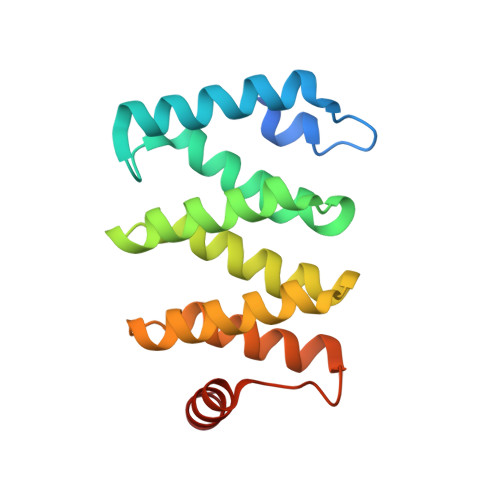Capturing the Mechanism Underlying TOP mRNA Binding to LARP1.
Cassidy, K.C., Lahr, R.M., Kaminsky, J.C., Mack, S., Fonseca, B.D., Das, S.R., Berman, A.J., Durrant, J.D.(2019) Structure 27: 1771
- PubMed: 31676287
- DOI: https://doi.org/10.1016/j.str.2019.10.006
- Primary Citation of Related Structures:
6PW3 - PubMed Abstract:
The RNA-binding protein La-related protein 1 (LARP1) plays a central role in ribosome biosynthesis. Its C-terminal DM15 region binds the 7-methylguanosine (m 7 G) cap and 5' terminal oligopyrimidine (TOP) motif characteristic of transcripts encoding ribosomal proteins and translation factors. Under the control of mammalian target of rapamycin complex 1 (mTORC1), LARP1 regulates translation of these transcripts. Characterizing the dynamics of DM15-TOP recognition is essential to understanding this fundamental biological process. We use molecular dynamics simulations, biophysical assays, and X-ray crystallography to reveal the mechanism of DM15 binding to TOP transcripts. Residues C-terminal to the m 7 G-binding site play important roles in cap recognition. Furthermore, we show that the unusually static pocket that recognizes the +1 cytosine characteristic of TOP transcripts drives binding specificity. Finally, we demonstrate that the DM15 pockets involved in TOP-specific m 7 GpppC-motif recognition are likely druggable. Collectively, these studies suggest unique opportunities for further pharmacological development.
- Department of Biological Sciences, University of Pittsburgh, 4249 Fifth Avenue, Pittsburgh, PA 15260, USA.
Organizational Affiliation:

















